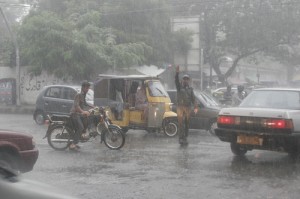Air pollution causing decline in monsoon rains, study finds
University of Edinburgh-led study suggests drying of monsoon over past 50 years caused by man-made anthropogenic aerosol pollution
Air pollution particles from man-made sources have played a “significant” role in a decline in monsoon rainfall over the past 50 years, a University of Edinburgh-led study has found.
According to the study, ‘Decreased monsoon precipitation in the Northern Hemisphere due to anthropogenic aerosols’, levels of rain recorded during the Northern Hemisphere’s summer monsoon in the second half of the 20th century have fallen by as much as 10%.

Monsoon rainfall in the Northern Hemisphere has declined by as much as 10% due to air pollution, scientists claim
It explains that changes to global rainfall patterns can have consequences for human health and agriculture, as summer monsoons are “an integral component of Earth’s hydrological cycle and affect the lives of billions of people” — largely in the likes of India, South East Asia and parts of Africa.
The team of scientists from the University of Edinburgh and the University of Reading behind the study found that emissions of tiny air particles from man-made sources — known as anthropogenic aerosols — were the cause of the decline in monsoon rainfall.
According to the study, high levels of aerosols in the atmosphere cause heat from the sun to be reflected back into space, lowering temperatures on the earth’s surface and reducing rainfall.
And, it adds that levels of aerosol emissions have increased considerably since the 1950s, with the most common sources being power stations and cars.
Method
The team calculated the average summer monsoon rainfall in the Northern Hemisphere between 1951 and 2005, using computer-based climate models to quantify the impact of increasing aerosol emissions and greenhouse gases over the same period.
They also took account of natural factors such as volcanic eruptions and climate variability to gauge the impact of human activity on the amount of monsoon rainfall.
However, the researchers said levels of man-made aerosols are expected to decline during the 21st century as countries begin adopting cleaner methods of power generation.
Lead author of the study, Dr Debbie Polson — University of Edinburgh’s School of GeoSciences — said: “This study shows for the first time that the drying of the monsoon over the past 50 years cannot be explained by natural climate variability and that human activity has played a significant role in altering the seasonal monsoon rainfall on which billions of people depend.”
The study was published in the journal Geophysical Research Letters in August 2014 and was funded by the Natural Environmental Research Council, European Research Council and National Centre for Atmospheric Science.







 Network
Network